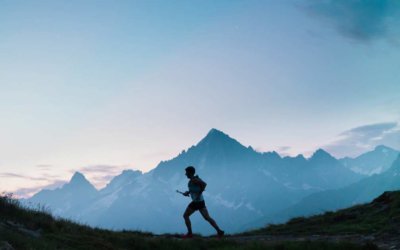Key Points
- Live-high train-low altitude training models have been demonstrated to increase haemoglobin mass, aerobic capacity and repeat sprint ability. In addition this model can reduce the likelihood of acute mountain sickness and achieve partial ventilatory acclimitisation prior to competitions or climbing at high altitude.
- Live-low train-high altitude training models have been demonstrated to increase peak and mean power output, delay fatigue and significantly increase the distance that can be covered at high-intensities during competitive team sport matches.
- Simulated altitude systems offer a cost-effective and logistically easier alternative to traditional altitude training camps, for both individual and team sport athletes.
Altitude training for individual and team sport athletes: LHTL and LLTH
The performance benefits of altitude training have long been known to those in sport; however, whilst the majority of elite athletes in individual sports such as running, cycling and triathlon utilise altitude training, the uptake of athletes utilising altitude training within team sports has been significantly less. Whilst team sports (such as football, rugby, hockey etc.) in general have more technical and tactical elements, there are still enough significant endurance elements to suggest that altitude training could also enhance the physical performance of these athletes.
Reasoning that could account for this discrepancy, includes the logistical and timing constraints on when athletes could employ and most benefit from altitude training.1 There are also significant financial implications of taking an entire team to an altitude camp, plus the impact upon specific skills training due to potential unavailability of equipment and reduced sprinting capacity when both living and training at high altitude. However, with the advancing development of simulated altitude systems, these traditional constraints and limitations of altitude training for athletes in team sports are being addressed. This is allowing athletes to benefit from the physiological adaptations of altitude training within their own training environment, therefore minimising disruption to technical/tactical training in the build up to key fixtures.
Incorporating simulated altitude and the “live-high train-low” (LHTL) model into training programmes, has been proven to increase the haemoglobin mass (and hence also increase the oxygen transport capacity)2 of elite team sport athletes, with these physiological adaptations beneficial for both aerobic power and repeat sprint ability.3 Further studies have also investigated the length of performance benefit post simulated altitude exposure in hypoxic sleeping tents – with an increased haemoglobin and repeat sprint ability demonstrated in elite hockey players, lasting up to 3 weeks following a 2 week simulated altitude exposure.4 Whilst travelling to true altitude will result in a more profound physiological adaptation, due to a longer exposure (24 hours/day compared to 10-16 hours/day in a hypoxic sleeping tent), simulated altitude is recommended for team sport athletes as a suitable alternative for either maximising aerobic capacity prior to a low altitude competition5 or to ameliorate the symptoms of acute mountain sickness and attain partial ventilatory acclimatisation for competitions at altitude.6
The alternative simulated altitude training model, “live-low train-high” (LLTH), does not reproduce the same haemoglobin rises due to a much reduced time exposure to hypoxia. However, it has been validated to increase the peak and mean power output when international rugby players performed repeated sprint tests in simulated altitude.7 These significant increases in anaerobic power were observed after only 4 hypoxic sprint sessions, with similar studies in elite cross-country skiers demonstrating fatigue resistance after just a minimum of 6 hypoxic sprint sessions.8 If such training is continued over the course of four weeks (a similar time period for example to a block of preseason training), athletes who have undertaken hypoxic training have been demonstrated to cover a two-fold greater increase in distance in the validated Yo-Yo IR test (designed to test an athletes ability to repeatedly perform high-intensity aerobic exercise and correlated with improved intermittent sports performance). This increase is compared to control athletes undertaking similar training, but in normoxic conditions (33% increase compared to 14% increase distance covered respectively).9 In elite football players, a 10% increase in Yo-Yo performance has been correlated to a 10% increase in distance covered at high intensities (approximately 200m) per competitive match.10 Therefore in real terms, an increase in Yo-Yo performance of 33% (as demonstrated in hypoxic training groups) translates to an extra potential 600m of distance that can be covered at a high intensity effort during a single football match.
In summary, both live-high train-low and live-low train-high simulated altitude training models have been proven to enhance sporting performance amongst not only athletes in pure endurance sports, but also athletes in team sports such as football, rugby, hockey and water polo. Alongside this, simulated altitude also offers a cost-effective and logistically easier alternative to traditional altitude training camps, for both individual and team sport athletes. As such, simulated altitude training programmes can be flexible and used during periods of pre-season training or in the build up to important races, matches or tournaments to maximise athlete power output, fatigue resistance and aerobic capacity.
References
- Aughey RJ, Buchheit M, Garvican-Lewis LA et al. Yin and yang, or peas in a pod? Individual-sport versus team-sport athletes and altitude training. British Journal of Sports Medicine. 2013; 47: 1150–1154.
- Robertson EY, Saunders PU, Pyne DB et al. Reproducibility of Performance Changes to Simulated Live High/Train Low Altitude. Medicine & Science in Sports and Exercise. 2010; 42(2): 394-401.
- Garvican-Lewis LA, Clark SA, Polglaze T et al. Ten days of simulated live high:train low altitude training increases Hb mass in elite water polo players. British Journal of Sports Medicine. 2013; 47: i70–i73.
- Brocherie F, Millet GP, Hauser A et al. “Live High-Train Low and High” Hypoxic Training Improves Team-Sport Performance. Medicine & Science in Sports & Exercise. 2015; 47(10): 2140-9.
- Carr AJ, Garvican-Lewis LA, Vallance BS et al. Training to Compete at Altitude: Natural Altitude or Simulated Live High: Train Low? International Journal of Sports Physiology Performance. 2019; 14(4): 509-517.
- Gore CJ, McSharry PE, Hewitt AJ et al. Preparation for football competition at moderate to high altitude. Scandinavian Journal of Medical Science Sports. 2008; 18 (1): 85-95.
- Beard A, Ashby J, Kilgallon M et al. Upper-body repeated-sprint training in hypoxia in international rugby union players. European Journal of Sport Science. 2019; 17: 1-9.
- Faiss R, Willis S, Born D et al. Repeated double- poling sprint training in hypoxia by competitive cross-country skiers. Medicine & Science in Sports & Exercise. 2015; 47(4): 809–817.
- Galvin HM, Cooke K, Sumners DP et al. Repeated sprint training in normobaric hypoxia. British Journal of Sports Medicine. 2013; 47: i74–i79.
- Bangsbo J, Iaia FM, Krustrup P. The Yo-Yo intermittent recovery test: a useful tool for evaluation of physical performance in intermittent sports. Sports Medicine. 2008; 38(1): 37-51.




